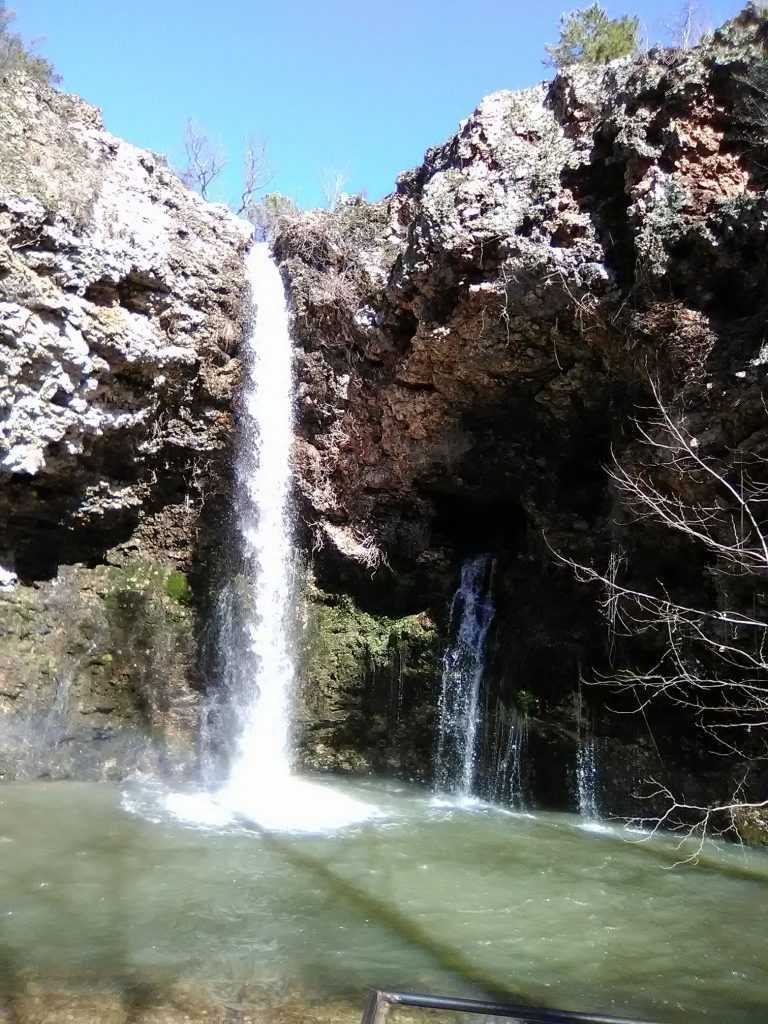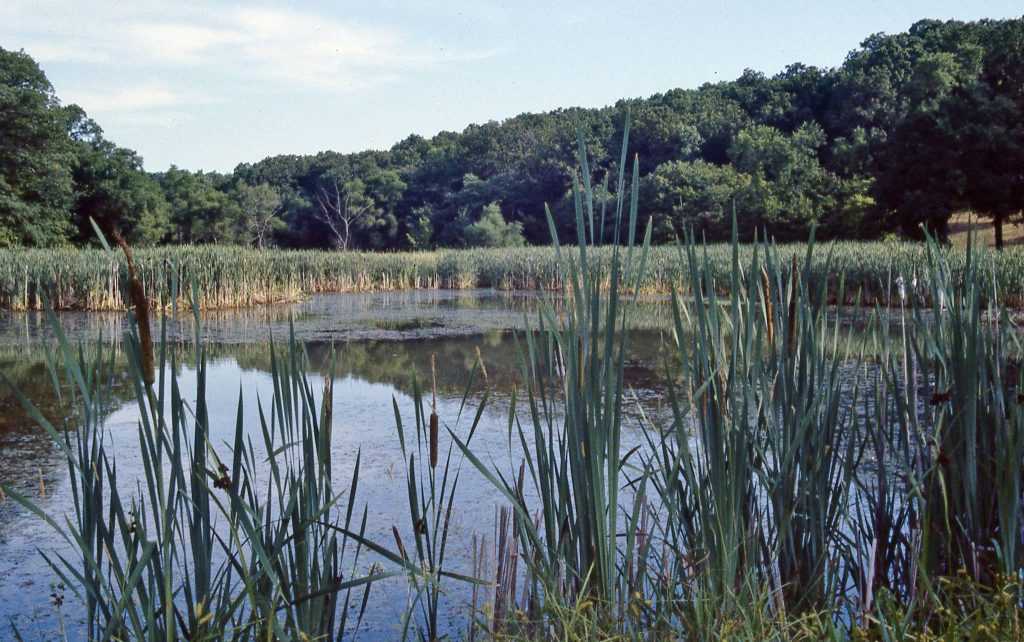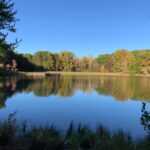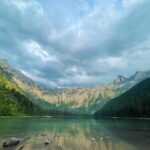Siloam Springs State Park
Key Information
Contact Info
217-894-6205
Location
938 County Rd 3003 E, Clayton, IL 62324, United States
Opening Hours
Daylight to Dark
Fee
$10 per vehicle per day
Introduction of Siloam Springs State Park
At Siloam Springs State Park, only a few minutes east of Quincy, nature’s abundance has combined to create a natural beauty and source of leisure much valued by generations of Midwesterners.
One of the most beautiful parks in Illinois, this 3,323 acre location is distinguished by its lushly forested landscape, dazzling lake, and well kept amenities. Whether you enjoy hiking, camping, picnics, fishing, hunting, or boating, it’s the perfect location for outdoor excursions. The park is flanked by picturesque crests, lush gullies, and wild rose, black-eyed Susan, white false indigo, and snapdragon-filled meadows.
George Meyers purchased the region in 1852 as compensation for his service in the Black Hawk and Mexican wars. The region was formerly a part of the “military tract” in western Illinois (property set aside to be handed to battle veterans). At the age of 102, he passed away in 1882. The name Siloam Springs, which comes from a Biblical allusion, was given to the springs by the Rev. Reuben K. McCoy when he found them after the Civil War. Legend has it that the spring water in the vicinity possesses medical properties.
The Siloam Springs Recreation Club bought the property in 1935 with the intention of restoring it and provide a recreational area for the neighborhood’s residents. It became a state recreation area in 1940 when Adams and Brown County residents collected money to match state funding. The swimming pool was eventually abandoned, the old hotel and bathhouses were demolished, and the springs were no longer utilised. The most well-liked spring is located in the No. 2 spring house, which was restored in 1995. The 58-acre lake was formed in 1954 and 1955 when a steep valley was crossed by an earthen dam. After Siloam Springs was established as a state park in 1956, work on improving its recreational amenities started.

Siloam Springs State Park Activities
Boating
There is a launching point for private vessels, and row boats, canoes, and paddle boats are available for rental. No outboards; only electric motors are permitted.
Fishing
Carp, crappie, channel catfish, rainbow trout, largemouth bass, bluegill, redear, and green sunfish are among the fish put in the lake. Before visiting the park, a fishing licence for Illinois and an Inland Trout stamp must be obtained. The Department of Natural Resources has designated this area as a fish preserve, thus fishermen are only permitted to use sport fishing gear and a maximum of two poles and four hooks. Along with shore fishing, the lake has six fishing piers.
Hiking
The numerous wildflowers present throughout the park, such as wild roses, snapdragons, and black-eyed Susans, can be seen up close by hiking the Siloam Springs paths. In the park, there are roughly 12 miles of beautiful hiking routes that travel from valleys to flatlands, including a 6-mile hiking and backpacking track. The majority of the routes are simple, although the Hoot Owl 1.5-miler and the Red Oak 4-miler backpacking paths are both challenging. For those who want to trek there, there are also four undeveloped camp sites accessible.
Picnicking
Visitors may find four shelters, charcoal grills, restrooms, covered tables, and playground equipment at the Old Siloam picnic area. More than 20 tables, flush toilets, hot and cold water, barbecues, play structures, a lot of parking, and a pair of horseshoe pits are all available in the main shelter house. Additionally, there are a number of additional smaller locations with tables and grills strewn throughout the park entry road.
Hunting
Hunting is permitted during the hunting season when game populations permit. For information on species, shooting windows, opening days, and places open, please contact the park office.
Camping
There are 98 Class A camp sites with restrooms, showers, and electricity, 84 Class B camp sites with restrooms and showers, four backpack camp sites, a unique group campsite, and more if you wish to spend a night or two beneath the stars. All campers have access to a strategically situated shower facilities.
Horseback Riding
The park has 23 miles of horse routes that traverse steep forested valleys and ridgetops. Riders and their horses have access to a separate camping area with water and little power. There are no available horse rentals.
RVing
There are 98 electric class A campsites available.
Winter Sports
Ice skating, ice fishing, cross-country skiing, and sledding are all wintertime pastimes.

History of the Area
George Meyers purchased the region in 1852 as compensation for his service in the Black Hawk and Mexican wars. The region was formerly a part of the “military tract” in western Illinois (property set aside to be handed to battle veterans). At the age of 102, he passed away in 1882. The name Siloam Springs, which comes from a Biblical allusion, was given to the springs by the Rev. Reuben K. McCoy when he found them after the Civil War. Legend has it that the spring water in the vicinity possesses medical properties.
Local businessman and stock trader Quincy Burgesser learned about the springs and their “curative worth” after Meyers passed away. He had the water tested and found that it was stronger (had more minerals) than the water from the well-known Eureka and Waukesha springs.
Burgesser said that the water could treat practically every condition, including intoxication and drug addiction. By 1884, he had built two spring homes, a bathhouse, and the Siloam Forest Home Hotel; as a result, the location was a well-liked and posh resort. The No. 2 spring’s water was bottled and sent as far west as Kansas City, and bottling developed into a thriving industry for many years.
The Siloam Springs Recreation Club bought the property in 1935 with the intention of restoring it and provide a recreational area for the neighborhood’s residents. It became a state recreation area in 1940 when Adams and Brown County residents collected money to match state funding. The swimming pool was eventually abandoned, the old hotel and bathhouses were demolished, and the springs were no longer utilised. The most well-liked spring is located in the No. 2 spring house, which was restored in 1995.
The 58-acre lake was formed in 1954 and 1955 when a steep valley was crossed by an earthen dam. After Siloam Springs was established as a state park in 1956, work on improving its recreational amenities started.
Transportation
Driving
Take Illinois Route 104 nine miles east to County Road 1200 north from Quincy, Illinois. Take County Road 2873E for twelve miles, then turn south for three miles to reach the park gate. Nearest point to park office is 1.5 kilometres away. There are park signs from Route 104 to the park entrance.
I-72 West to Griggsville and Rte 107 North for 11 miles from Springfield, Illinois. From there, go fifteen miles west on Route 104 to County Road 2873E. The park entrance is six miles north of the turn. Office is 1.5 kilometres from the front door. There are park signs from Route 104 to the park entrance.
Take US Rte. 24 to the area immediately west of Clayton from Peoria, Illinois. From there, take County Road 2950E south for ten miles to Kellerville, then turn south again for one mile on 1200N. go three miles south on County Road 2873 to the park gate. At 1.5 kilometres from the entrance, the park office. Park entry signs are posted from Route 24.
Parking
Parking is available.
Public Transport
Public Transport is available.




